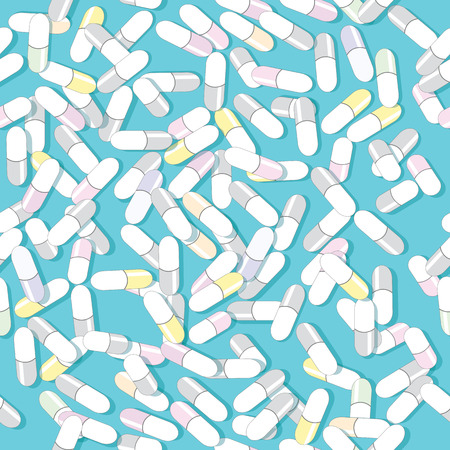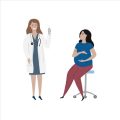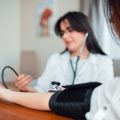Understanding Acne and the Need for Prescription Treatments
Acne is a prevalent skin condition in the UK, affecting individuals across all age groups, though it is most commonly seen during adolescence. Characterised by spots, blackheads, and sometimes cysts, acne can have a significant impact not only on physical appearance but also on emotional well-being. The unpredictable British climate, with its humidity and seasonal changes, can exacerbate symptoms for many people. While over-the-counter remedies are widely available at local chemists and supermarkets, these treatments may not be sufficient for moderate to severe cases or for those who experience persistent breakouts. In such situations, prescription interventions become essential. NHS guidelines often recommend consulting a GP or dermatologist when standard topical solutions fail to deliver results, as tailored prescription treatments can address more complex causes of acne, reduce inflammation more effectively, and help prevent long-term scarring. Understanding the necessity of professional intervention is the first step towards achieving clearer skin and restoring self-confidence.
Topical Prescription Treatments: Creams and Gels
When seeking prescription treatments for acne in the UK, topical therapies remain a cornerstone, commonly provided both through NHS dermatology services and private clinics. These treatments are typically offered in cream or gel formulations, tailored to suit various skin types and severity levels of acne. Below, we explore the main categories of topical prescription products available in the UK, their application protocols, efficacy, and notable brands familiar to British patients.
Common Types of Topical Prescription Products
| Category | Main Ingredients | UK Brand Examples | Primary Function |
|---|---|---|---|
| Retinoids | Adapalene, Tretinoin | Differin, Retin-A (private) | Regulates skin cell turnover, reduces inflammation |
| Benzoyl Peroxide Combinations | Benzoyl Peroxide + Adapalene or Clindamycin | Epiduo, Duac | Kills bacteria, reduces comedones and inflammation |
| Antibacterials (Topical Antibiotics) | Clindamycin, Erythromycin | Zineryt, Dalacin T | Targets Propionibacterium acnes bacteria, reduces redness |
Application Guidance and Effectiveness
Proper application is essential for maximising the benefits of these topical agents. Most creams and gels are applied once or twice daily on cleansed skin. Patients are generally advised to use a thin layer over the entire affected area rather than spot-treating individual blemishes. As some products—especially retinoids—can cause initial irritation such as dryness or peeling, starting with alternate-day application may be recommended by GPs or dermatologists.
Efficacy Across Formulations
Clinical studies and NHS guidelines highlight that combination therapies (such as benzoyl peroxide with adapalene or clindamycin) tend to offer superior results compared to monotherapies. This approach helps combat antibiotic resistance—a key concern within the UK health sector—and improves overall treatment outcomes. Visible improvements typically begin after four to six weeks of consistent use, although full benefits may require up to twelve weeks.
Popular UK Brands and Accessibility
The most frequently prescribed brands within the NHS include Differin (adapalene), Epiduo (adapalene + benzoyl peroxide), and Duac (clindamycin + benzoyl peroxide). Zineryt (erythromycin + zinc acetate) remains a longstanding choice for those needing antibacterial action without oral antibiotics. While private practices may access a broader range—including higher-strength retinoids—NHS prescriptions focus on evidence-based formulations with proven safety profiles suitable for diverse populations across England, Scotland, Wales, and Northern Ireland.

3. Oral Medications for Acne: Antibiotics and Hormonal Options
When topical treatments alone are insufficient, oral medications play a pivotal role in managing moderate to severe acne across the UK. These systemic therapies, prescribed by GPs or dermatologists, typically fall into two categories: antibiotics and hormonal agents. Understanding their mechanisms, safety profiles, and local prescribing protocols is crucial for effective and responsible acne management.
Oral Antibiotics: A Mainstay for Inflammatory Acne
Oral antibiotics such as lymecycline, doxycycline, and erythromycin are commonly prescribed to tackle inflammatory acne. They function by reducing the population of Cutibacterium acnes bacteria and controlling inflammation. In line with NHS guidance, these medications are generally recommended for short-term use (up to three months) to minimise the risk of bacterial resistance. Prescribers in the UK are advised to combine oral antibiotics with a topical retinoid or benzoyl peroxide to enhance efficacy and discourage resistance. It is essential to educate patients about potential side effects, including gastrointestinal upset and photosensitivity, and reinforce adherence to the prescribed course.
Hormonal Treatments: Combined Oral Contraceptives
For women experiencing acne linked to hormonal fluctuations, combined oral contraceptives (COCs) offer an alternative therapeutic option. Formulations containing both oestrogen and progestogen—such as those available on the NHS—can regulate sebum production and reduce androgen-driven breakouts. COCs are particularly beneficial in cases where acne is associated with polycystic ovary syndrome (PCOS) or persistent adult acne. Local guidelines emphasise careful patient selection, excluding those with contraindications like thromboembolic disorders or certain migraines. Regular follow-up is required to monitor side effects and assess treatment response.
Prescribing Guidelines and Safety Considerations
The British Association of Dermatologists (BAD) provides comprehensive recommendations on the use of oral agents for acne. As per UK protocols, oral antibiotics should not be used as monotherapy or for prolonged durations due to antimicrobial stewardship concerns. Hormonal therapies require an individualised risk assessment and ongoing monitoring. Both options necessitate clear communication with patients about expected outcomes, possible adverse effects, and the importance of adherence.
Local Protocols in Primary Care Settings
Across England, Scotland, Wales, and Northern Ireland, NHS primary care providers adhere to standardised pathways for escalating from topical to oral treatments. Referral to secondary care dermatology services may be warranted if oral medications fail or if severe nodulocystic acne is present. Shared decision-making between clinician and patient remains central to optimising results while mitigating risks associated with systemic therapies.
4. Navigating the NHS: Accessing Prescription Acne Treatments
In the UK, accessing prescription treatments for acne typically begins with your local GP surgery. The National Health Service (NHS) offers a structured care pathway to ensure patients receive appropriate and effective treatment for varying degrees of acne severity. Understanding this process is essential for navigating the system efficiently and setting realistic expectations regarding timelines and options.
Initial Consultation: Booking an Appointment with Your GP
The first step for most UK residents is to book an appointment with their NHS GP. During the consultation, your GP will assess the severity of your acne and discuss previous treatments you may have tried, such as over-the-counter creams or cleansers. If your acne is mild to moderate, your GP can prescribe topical treatments like creams or gels directly.
Typical Care Pathway for Prescription Acne Treatments
| Stage | Description | Average Waiting Time |
|---|---|---|
| GP Consultation | Assessment and initial prescription of topical or oral medications. | 1–2 weeks (dependent on local surgery availability) |
| Follow-up Appointment | Review effectiveness; possible escalation to stronger prescriptions. | 4–8 weeks after initial treatment begins |
| Dermatology Referral (if needed) | If standard treatments are ineffective, referral to NHS dermatology services. | Up to 18 weeks (varies by region) |
| Specialist Consultation & Advanced Treatment | Access to advanced therapies such as oral antibiotics, hormonal treatments, or isotretinoin. | Depends on local wait times and case urgency |
NHS vs Private Clinics: Key Differences in Access and Care
If waiting times for NHS dermatology referrals are lengthy or if you prefer quicker access, private clinics present an alternative. Private consultations can usually be booked within days, offering faster access to specialist-led care and a broader range of treatment options. However, these services are not covered by the NHS and incur additional costs.
| Aspect | NHS Pathway | Private Clinic Pathway |
|---|---|---|
| Cost to Patient | Generally free at point of use (prescription charges may apply in England) | Consultation and treatment fees apply; not covered by NHS |
| Waiting Times | Longer (up to several months for specialist referrals) | Shorter (often within a week) |
| Treatment Range | NHS-approved medications; stricter protocols followed | Wider selection; may offer newer or off-label treatments more readily |
| Follow-up Care | Regular reviews as per NHS guidelines | Bespoke follow-ups, often with direct clinician contact available |
This streamlined overview helps UK residents understand how to approach prescription acne treatment through both NHS and private pathways, balancing considerations of time, cost, and access to advanced therapies.
5. Considerations for Efficacy and Side Effects
When exploring prescription treatments for acne in the UK, it is essential to weigh both the efficacy of available medications and their potential side effects. Understanding what to expect during treatment can help patients make informed decisions in consultation with their GP or dermatologist.
Common Side Effects of Prescription Acne Medications
Topical treatments, such as creams and gels containing retinoids or antibiotics, frequently cause initial skin irritation, dryness, redness, or peeling. These symptoms often subside as the skin adapts, but some individuals may experience persistent discomfort or sensitivity. Oral antibiotics, while generally well tolerated, can occasionally lead to gastrointestinal upset, increased sun sensitivity, or, less commonly, allergic reactions. Oral isotretinoin—a potent option reserved for severe cases—has a well-documented profile of side effects including dry lips, nosebleeds, and potential mood changes. The NHS advises regular blood tests during isotretinoin therapy to monitor liver function and cholesterol levels.
Treatment Durations and Expectations
The duration of prescription acne treatment varies according to severity and the medication prescribed. Topical therapies typically require consistent use for several weeks before improvements become visible. Oral antibiotics are usually prescribed for a limited period—often three to six months—to prevent bacterial resistance. Isotretinoin courses generally last four to six months; however, follow-up care is vital due to the risk of relapse and monitoring for adverse effects.
Monitoring and Ongoing Assessment
Effective acne management in the UK involves regular follow-ups with healthcare professionals to monitor both progress and any emerging side effects. Adjustments to treatment regimens are common practice if patients develop intolerances or if there is insufficient improvement after an adequate trial period. The NHS emphasises patient education around medication adherence and side effect reporting to ensure safety and optimal outcomes throughout the course of prescribed therapy.
6. Emerging Trends in Dermatological Care for Acne
The landscape of acne management within the UKs healthcare system is rapidly evolving, driven by technological advancements and a growing emphasis on personalised medicine. One notable development is the integration of digital dermatology into routine care. NHS trusts and private practices alike are increasingly leveraging teledermatology platforms, allowing patients to consult dermatologists via secure video calls or to submit high-resolution images for remote assessment. This not only enhances accessibility—particularly for those in rural or underserved regions—but also facilitates prompt diagnosis and follow-up.
Personalised Treatment Approaches
The shift towards personalised treatment plans is another significant trend. Instead of a one-size-fits-all regimen, clinicians now consider individual patient profiles, including skin type, severity of acne, lifestyle factors, and genetic predispositions. Advances in pharmacogenomics are beginning to inform decisions about which oral medications or topical agents might be most effective for a particular patient, minimising trial-and-error and reducing side effects.
Innovative Therapies and Products
The UK market is witnessing the introduction of novel prescription treatments such as combination gels containing retinoids with antimicrobials, as well as non-antibiotic oral options like spironolactone for hormonal acne in women. Emerging light and laser therapies are being incorporated into some NHS pathways, offering alternatives for those with resistant cases or contraindications to standard treatments.
Collaborative Care Models
There is also a move towards integrated care models where GPs, dermatologists, pharmacists, and mental health professionals collaborate to address both the physical and psychological impacts of acne. Digital health records support seamless communication among providers, ensuring continuity of care and better outcomes for patients across England, Scotland, Wales, and Northern Ireland.
As these innovations continue to shape dermatological practice in the UK, patients can expect more accessible, effective, and tailored solutions for managing acne—reflecting broader trends towards digitalisation and precision medicine within the NHS and private sectors alike.

